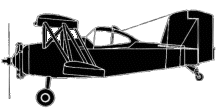
ASN Wikibase Occurrence # 176951
This information is added by users of ASN. Neither ASN nor the Flight Safety Foundation are responsible for the completeness or correctness of this information.
If you feel this information is incomplete or incorrect, you can submit corrected information.
| Date: | Friday 12 June 2015 |
| Time: | 12:15 |
| Type: |  Grumman G-164B Ag-Cat |
| Owner/operator: | Barney Steven K |
| Registration: | N48687 |
| MSN: | 157B |
| Year of manufacture: | 1976 |
| Total airframe hrs: | 7833 hours |
| Engine model: | P&W R-1340-AN-1 |
| Fatalities: | Fatalities: 0 / Occupants: 1 |
| Aircraft damage: | Substantial |
| Category: | Accident |
| Location: | NW of Foster, NE -
 United States of America United States of America
|
| Phase: | Manoeuvring (airshow, firefighting, ag.ops.) |
| Nature: | Agricultural |
| Departure airport: | Bloomfield, NE (84Y) |
| Bloomfield, NE (84Y) | |
| Investigating agency: | NTSB |
| Confidence Rating: |
The pilot reported that he departed on a local agricultural application flight with what he believed was sufficient fuel on board for 2 hours of flight. He stated that he based this assumption solely on viewing the fuel quantity gauge and did not insert a stick in the fuel tank to check the fuel amount before departing on the accident flight. About 1 hour 15 minutes into the flight, the airplane lost engine power, and the pilot subsequently conducted a forced landing on muddy and water-logged terrain. The airplane then nosed over and sustained substantial damage.
The pilot reported that, during a postaccident examination, the fuel quantity gauge read 1/4 full even though the fuel system was actually empty. The preflight procedures contained in the airplane’s flight manual included a fuel quantity check, which was to be accomplished by opening the fuel cap and visually checking the fuel level, and a fuel gauge check to observe the fuel gauge for proper reading. The pilot did not verify the fuel quantity in accordance with these procedures before departing.
Probable Cause: The total loss of engine power during a low-level aerial application flight due to fuel exhaustion following the pilot’s inadequate preflight inspection that led to his assumption that sufficient fuel was on board for the flight based on his reliance on a fuel gauge that indicated the incorrect fuel level.
Accident investigation:
 |
|
Sources:
NTSB
FAA register: http://registry.faa.gov/aircraftinquiry/NNum_Results.aspx?NNumbertxt=N48687
History of this aircraft
Other occurrences involving this aircraft
| 16 June 1991 | N48687 | Hoistad Flying Service, Inc. | 0 | Gwinner, ND |  |
sub |
| 14 August 1992 | N48687 | Wischer Aviation, Inc. | 0 | Grandin, ND |  |
sub |
Location
Revision history:
| Date/time | Contributor | Updates |
|---|---|---|
| 13-Jun-2015 20:51 | Geno | Added |
| 15-Jun-2015 20:46 | Geno | Updated [Aircraft type, Registration, Cn, Source, Damage, Narrative] |
| 18-Jun-2015 23:37 | Geno | Updated [Time, Departure airport, Source] |
| 21-Dec-2016 19:30 | ASN Update Bot | Updated [Time, Damage, Category, Investigating agency] |
| 01-Dec-2017 13:43 | ASN Update Bot | Updated [Operator, Other fatalities, Departure airport, Destination airport, Source, Narrative] |
Corrections or additions? ... Edit this accident description
The Aviation Safety Network is an exclusive service provided by:


 ©2024 Flight Safety Foundation
©2024 Flight Safety Foundation